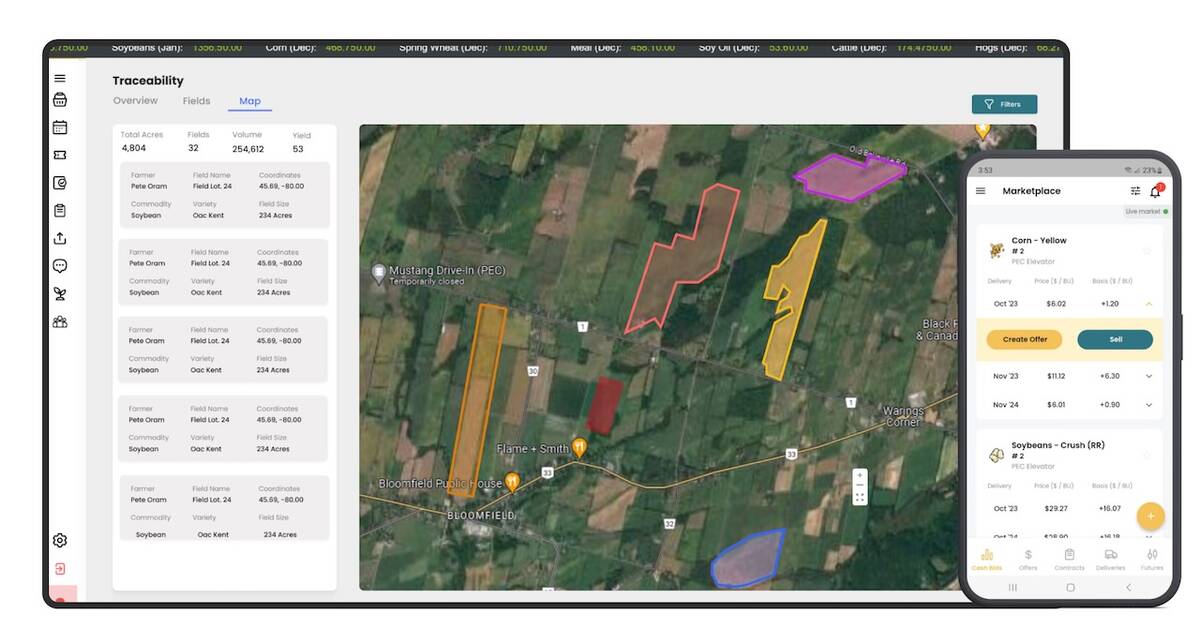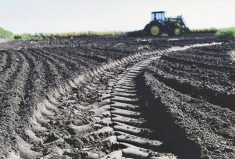Soil improvement is a keystone of Canada’s agricultural future, and fundamental to its longevity, according to the “Power of Soils” report published by the Greenbelt Foundation.
Produced in partnership with a wide array of industry associations, the publication is designed to provide a comprehensive overview of Canada’s current agri-environmental policy and programming, what practices are important for soil health, why more farmers are not adopting such practices, and what policy changes can be made to solve the problem.
Why it matters: Current government investments in soil health, or how they are administered at least, are not widespread, diverse, or substantial enough to affect significant change.
Read Also

Ontario company Grain Discovery acquired by DTN
Grain Discovery, an Ontario comapny that creates software for the grain value chain, has been acquired by DTN.
The report makes several key recommendations:
• Prioritizing soil health by making it a top consideration in the next Federal-Provincial-Territorial Agricultural Framework, creating a national soil health strategy, and integrating initiatives with climate change policies and funding programs.
• Enhancing soil health knowledge transfer through a variety of means, including more training for advisors and service providers, greater public research and extension capacity, farmer-to-farmer learning opportunities and region-specific soil health “check-up” tools.
• Encourage soil health practices through increased overall funding for on-farm projects, including support for low-risk projects, plus the development of greenhouse gas offset protocols to increase funding for nutrient management systems, grassland conservation, reforestation as well as afforestation.
Paul Smith, a sustainable agriculture consultant working with the Greenbelt Foundation, describes efforts to improve soil health as a win for the climate, the wider environment, as well as farm profits. Knowledge is not lacking, he says, though the distribution of information has been a major barrier. To date, learning has been limited by segmented programs, historical cuts to research and extension and other factors.
“We really need to invest more in terms of knowledge transfer. There’s momentum there – it’s just fielding that momentum further to reach more farmers,” says Smith, later adding the importance of not further reducing research and extension investments.
Budget commitments
The first federal budget in two years, released on April 19, contains a commitment of $270 million over two years for nutrient management, cover crops, rotational grazing, and energy upgrades. Smith says these proposals are significant and could spur the kind of soil health initiatives argued for in the Power of Soils report.
How the investment is doled out – that is, how the programs are designed – will be the real difference-maker. If the money is only available through elaborate, highly bureaucratic grant processes, for example, a significant portion of producers will already be excluded.
“If you want to have an effect you have to have tens of thousands more farmers engaged in soil health practices… A lot of money in a complex bureaucratic process will not work. You need to appeal to as many types of farmers as you can,” says Smith.
More effective alternatives could include creating a separate, relatively simple process for small projects like cover cropping and soil sampling. The application processes employed by conservation groups could themselves serve as an example from which federal and provincial governments can base their initiatives.
Accounting for the complexity of farming systems and the potential costs if a project fails is also critical. Indeed, doing so would go a long way when convincing otherwise reluctant farmers to try new things.
“Why not have insurance against that to reduce the risk of innovation? That’s been tried in a few jurisdictions and maybe we should try as well.”
Regardless of how soil health programs are designed, however, Smith reiterates everything hinges on solid financial commitments.
“Canada spends far less than the U.S. and Europe on environmental and soil health-related programs. We really do need to spend more money to incentivize the adoption of these practices. There’s no substitute for that.”













